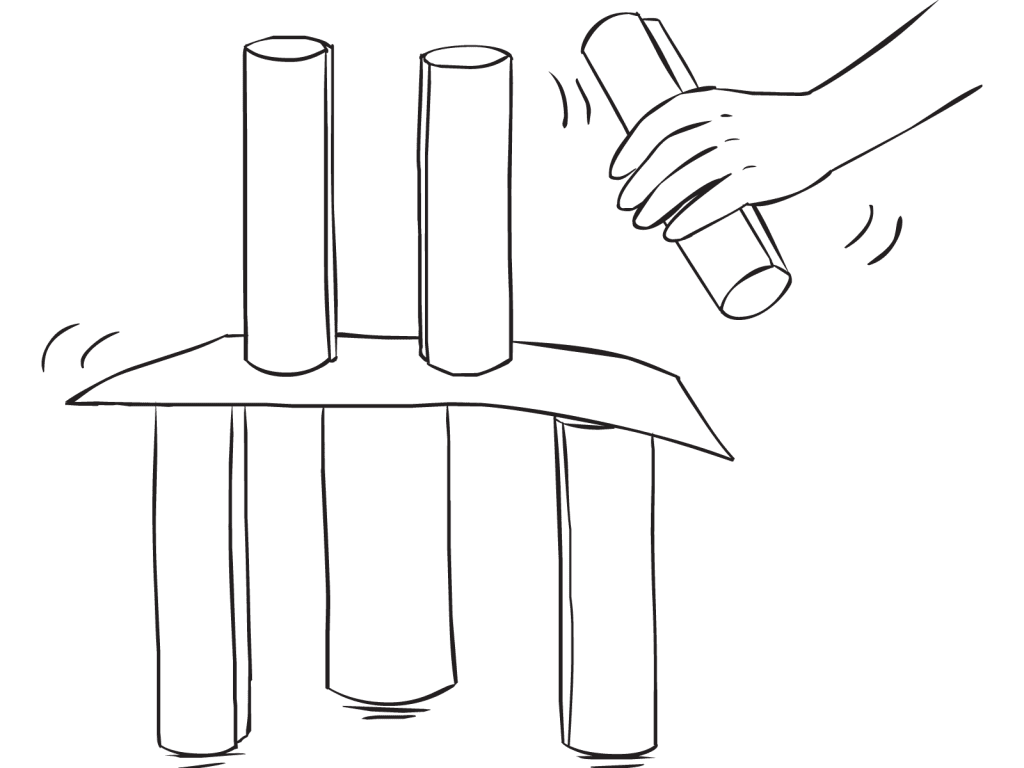Save to Playlist
Step-by-Step Instructions
Resources Premium
Video Tutorial Premium
How To Play Narrative Premium
Practical Leadership Tips Premium
Social-Emotional Learning Premium
Health & Wellness Programming Premium
Popular Variations Premium
You Might Also Like... Premium
Virtual Adaptation Premium
Useful Framing Ideas Premium
Reflection Tips & Strategies Premium
Source Premium

No Props No Problem
Brand NEW book featuring 150+ outrageously fun group games & activities. Scan QR codes to connect to tons of digital content including video tutorials.
Add to Cart
NEW – No Props No Problem
The best-selling book featuring 150+ outrageously fun group games & activities. Scan QR codes to access exclusive digital content including video tutorials.

Free Ice-Breakers & Group Games
Ten of the best no-prop, interactive ‘get-to-know-you’ games & activities. 100% fun, your group will love ’em. Our most successful giveaway, 10,000+ downloads so far…
Top Ten Icebreakers & Group Games
Download our free 28-page ebook jam-packed with outrageously fun activity ideas.
Just one more question:
I am interested in…
Choose a plan that’s right for you
We offer a range of membership plans with no surprises.
Click an option below & discover our simple pricing.

Individual
Click here if you’re a:
- Teacher
- Corporate trainer
- Outdoor educator
- Camp leader
- Youth leader
- Conference organiser
- Therapist/counsellor
Membership Plans

Enterprise
Click here if you represent a:
- School
- Corporation
- Community-based Organisation
Explore plans for
10, 50, 200 or more
potential users
Membership Plans






thanks for this, mr. collard.
excited to do this for team building next tiiiiiime!
plus exploring how to combine the reflection prompts with ‘how might we questions’, and potentially matching this activity with another one to increase/reinforce the impact.
what might be some of these activities, mark?
(“,)
p.s. we can reuse the papers for other sessions like paper stone stacking and passing activities
Yes, JeWElle, I always like to roll one activity (and its debris) into the next one, so you share good ideas. In regards to connecting this activity to others, there are many I can think of, but other tower building exercises may be a natural fit such as Marshmallow Challenge, Leaning Tower of Feetza, Block Bridge, etc.
thaaaaanks, mark!
(“,)
Hi, I did this activity yesterday with a group of 24 teachers who we hadn´t known beforehand. Blind faith in Playmeo! And it paid off. It was great! Each group spontaneously developed different strategies, they were totally engaged, there was a lot of laughter, perhaps some frustration as the momentarily tallest tower collapsed (but they recovered in time to win). Our workshop was on Environmental Education and one of our focusses was recycling paper from the classrooms, so it fitted in very well. Highly recommend it!
Awesome Sam, thanks for sharing (and for trusting our content 🙂 )
I love the creativity available in this activity. There is no one way to make a tall tower. All of my teams have used different strategies. I did this with about 10 teams and all had a different tower. I did this with teend and they just kept building. They seem to love that activity.
We sometimes use the variations of
– straws and stickytape – limiting the amount of each to extend the group
– spaghetti and marshmallows – also limited amounts, can be quite entertaining (and a bit sticky!) and remember to bring a bag of marshmallows to eat afterwards!
Love it Ellie, thanks for sharing. Your suggestion of alternative resources reminds me of the Marshmallow Challenge
Just done it today with 4 primary students. They needed assistance with the communication skills (which is what we’re working on) but I really was amazed with the ideas they managed to come up with. I reduced the materials to 10 pieces of paper only but they still managed to utilise a full 20 minutes. The best bit was the joy shown by their achievement….winning!!
This is terrific news Gwynneth, thanks for sharing. Out of interest, how old were the students? What lessons did they take-away from their experience?
One year+ on & I’ve just seen your reply!
The students were 8 & 9 years old.
Their take away was the start of the l o n g journey towards empathy and respect of each other and persistence. We are still working to this same goal with the same students and the growth in other areas of school has been noticeable.
Great activity, especially, because it hardly requires anything. The lessons learnt:
– Prototyping as you build like children;
– Don’t over engineer;
– Don’t presume it is difficult;
– Ingenuity
Could be used as one of the early activity in the programme.